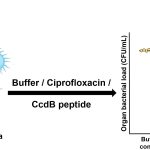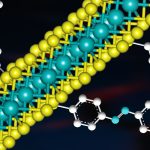
Researchers from the Departments of Inorganic & Physical Chemistry and Organic Chemistry have synthesised molecular architectures that can kill disease-causing bacteria in water, including the infamous methicillin-resistant Staphylococcus aureus. They fashioned these molecules to mimic natural enzymes, using the principles of supramolecular chemistry, which deals with how molecules assemble spatially, and the intermolecular forces responsible for their organisation.
In one of their studies, the researchers designed a “molecular cage” called PMB1 via self-assembly of a benzothiadiazole-based ligand and platinum-based units. The benzothiadiazole unit is a photosensitiser, which absorbs light efficiently and produces reactive oxygen species that disrupt the bacterial cell membrane. The positively charged PMB1 cage also enhances the adhesion of the bacteria to the cage and damages the bacterial cell membrane.
In another study, they propose a water-soluble nanozyme cage structure consisting of benzothiadiazole-based and palladium-based units, which imitates the activity of an enzyme called ‘oxidase’ and generates reactive oxygen species due to the light absorption by the benzothiadiazole unit. These kill the bacteria present in water.






